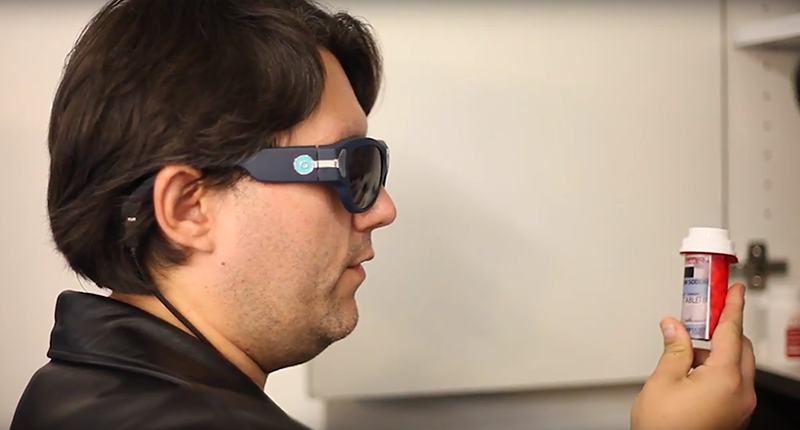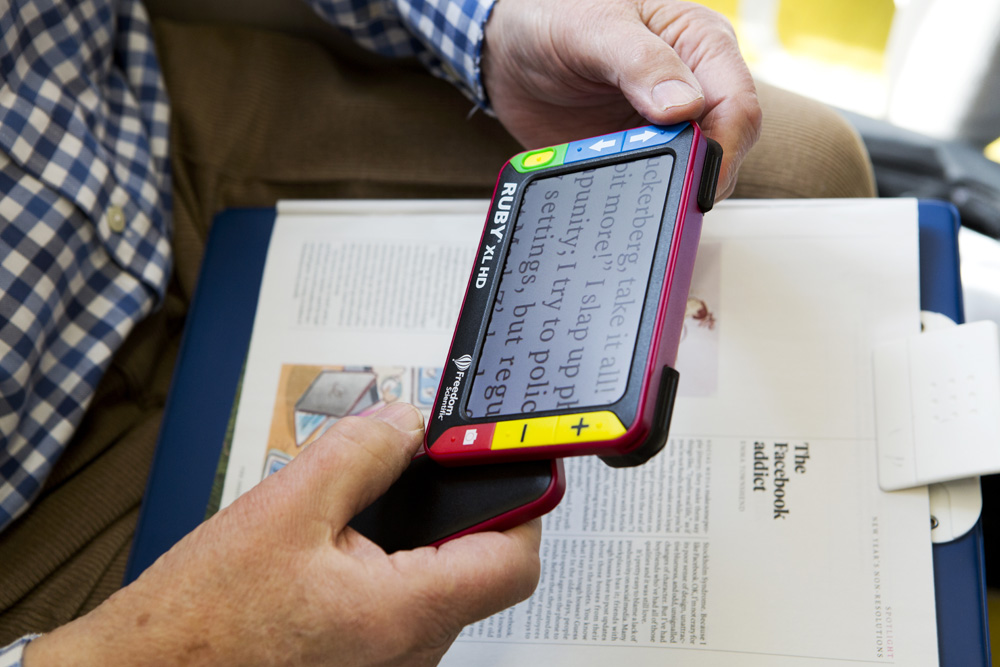Discover Ingenious Tools Designed for the Aesthetically Impaired
The growth of cutting-edge tools for the aesthetically impaired represents a significant advancement in access and self-reliance. Technologies such as wise glasses with AI capabilities and mobile applications developed to supply acoustic summaries are improving daily experiences for customers.
Smart Glasses for Navigation

Smart glasses created for navigation are transforming the means visually impaired people engage with their atmosphere. These innovative tools make use of a mix of camera innovation, expert system, and acoustic responses to offer real-time information concerning surroundings. By employing challenge detection systems, wise glasses can signal individuals to potential risks, allowing more secure wheelchair in both unfamiliar and acquainted settings.
The integration of GPS modern technology even more improves navigating abilities, permitting individuals to get acoustic instructions as they move. This hands-free technique not just fosters freedom yet also encourages visually damaged individuals to browse city landscapes with enhanced self-confidence. Additionally, lots of wise glasses are geared up with functions that recognize spots and road indications, giving contextual details that enhances the customer experience.
Additionally, the development of these devices is continuously advancing, with firms functioning to improve the precision of things acknowledgment and expand the variety of navigational attributes. As wise glasses end up being a lot more affordable and available, they hold the prospective to significantly change day-to-day live for visually impaired users. Eventually, these innovative tools stand for an essential step toward inclusivity, offering enhanced movement and a better sense of freedom for people navigating the world around them.

Mobile Application for Daily Living
Just how can mobile applications enhance the every day lives of visually damaged individuals? Mobile apps are changing the means aesthetically impaired users navigate their settings, take care of everyday tasks, and gain access to details. These applications supply vital support via numerous capabilities, promoting freedom and enhancing lifestyle.
A number of cutting-edge mobile apps are developed specifically for daily living. Applications like Be My Eyes connect visually damaged users with sighted volunteers via video clip calls, permitting them to obtain real-time help with tasks such as checking out tags or browsing unknown areas. Similarly, Seeing AI, developed by Microsoft, utilizes synthetic intelligence to describe surroundings, read text, and identify things, successfully changing a mobile phone into an effective tool for day-to-day help.
Additionally, navigating apps tailored for the aesthetically damaged, such as Aira and BlindSquare, offer audio-based directions and ecological info, allowing users to traverse their environments securely and confidently. Beyond navigation and instant aid, mobile applications also support company and job monitoring, with functions that help customers establish tips, develop to-do checklists, and track appointments. In summary, mobile applications act as indispensable resources, encouraging aesthetically damaged people to lead even more independent and satisfying lives.
Wearable Technologies for Assistance
Empowerment through technology is increasingly obvious in the realm of wearable gadgets designed to help aesthetically damaged people. These ingenious tools incorporate flawlessly right into life, enhancing navigation and supplying crucial feedback to users. For instance, clever glasses outfitted with cameras helpful hints can acknowledge faces and review text out loud, allowing customers to engage more with confidence in professional and social setups.
Another remarkable innovation is making use of haptic responses systems in wearable tools. These systems make use of vibrations or various other responsive signals to convey information about the customer's setting, such as obstacles or modifications in terrain, boosting mobility More hints and safety. Wearable innovations additionally include wristbands that link to mobile phones, signaling individuals to notifications with refined resonances, hence improving connection without dependence on visual signs.
As these modern technologies proceed to evolve, they are not just enhancing self-reliance for visually impaired people yet likewise cultivating a greater feeling of incorporation in culture. By linking the void between obstacles encountered in everyday living and the capacity for freedom, wearable technologies act as critical devices in the quest for equality and empowerment for those with aesthetic problems.
Audio Description Devices
Audio summary devices play a crucial duty in boosting access for visually impaired people, providing them with the ability to involve with visual media. Braille displays and notetakers. These tools provide narrated descriptions of key aesthetic components in movies, tv shows, and live performances, guaranteeing that individuals can totally understand the context and feelings conveyed through visuals
Audio summary can be incorporated into numerous systems, including streaming services, movie theater screenings, and live movie theater. Lots of preferred streaming solutions now include audio description as an access attribute, permitting audiences to choose it easily. In enhancement to mainstream media, specialized applications likewise exist, giving audio summaries for art exhibitions, galleries, and other cultural events.
The efficiency of audio summary hinges on the ability of the storytellers, that should convey aesthetic information succinctly without taking away from the initial sound. Developments in this area are also leading the way for even more personalized experiences, where users can adjust the level of detail and pacing according to their preferences.
Braille Innovations and Tools
Braille gadgets and developments have substantially transformed the way visually damaged people go to this site communicate with message and info. Modern advancements have caused the development of functional devices that enhance proficiency and independence amongst individuals. Especially, Braille show technologies have developed, enabling dynamic analysis experiences. These devices convert electronic text into Braille, enabling customers to access a vast range of details on smartphones, computer systems, and tablet computers.
Furthermore, mobile Braille notetakers incorporate typical Braille input with contemporary performances, helping with note-taking, organizing, and paper modifying on the move. Braille displays and notetakers. These compact devices typically feature text-to-speech capabilities, linking the void in between Braille and auditory info
On top of that, innovative Braille printers have actually arised, permitting users to generate Braille tags, documents, and instructional materials effectively. This accessibility promotes better engagement in expert and educational atmospheres, eventually promoting inclusivity.
Furthermore, research right into smart Braille technologies remains to broaden. Devices that integrate expert system are being checked out to give real-time navigating aid and contextual information, improving the customer experience in varied setups. Generally, these innovations show a commitment to equipping visually impaired individuals through innovation, ensuring they can quickly gain access to and involve with the world around them.

Conclusion
The innovation of cutting-edge devices for the aesthetically damaged substantially improves self-reliance and top quality of life. These innovations not just foster higher addition yet also advertise autonomy in daily activities, inevitably adding to a more equitable and available culture for visually damaged people.
As wise glasses become extra affordable and available, they hold the possible to significantly change day-to-day life for visually impaired individuals. Mobile apps are revolutionizing the way aesthetically damaged users browse their environments, manage everyday tasks, and gain access to information. Apps like Be My Eyes connect visually impaired individuals with sighted volunteers by means of video telephone calls, allowing them to get real-time support with jobs such as checking out labels or browsing unknown areas.In addition, navigating apps customized for the aesthetically damaged, such as Aira and BlindSquare, use audio-based instructions and environmental info, enabling users to traverse their surroundings safely and confidently.The innovation of ingenious tools for the aesthetically impaired dramatically boosts self-reliance and high quality of life.